How We Thrive on Our Tiny Floating City Without a Fridge
⛵︎ Logbook 11/9/25 (145 days in): Practical freedom, one boat-made meal at a time
This is the Logbook, a weekly invitation from Radical Paths to follow our latest adventures during our global sailing odyssey. Each installment tells the tale of what we saw, felt, and learned — from the beautiful to hard-earned.
Your subscription keeps these stories coming to your inbox. Any support will help support the adventure ⛵️😸🙏
$1 per month // $2 per month // $3 per month // $4 per month // $5 per month
This week, I finally made the mother of all boat-made meals.
I watched eagerly as the captain lifted his open-faced peanut butter & pinto chimichanga, hoping that he’d love his first bite as much as I had.
He said, “This is aaaaamazing!”
This felt extra sweet (or, in this particular case, savory) given I made this meal with a collection of days-old & weeks-old ingredients and no icebox or working fridge onboard.
This is what freedom actually looks like: mastering the constraints you’ve chosen for yourself.
I was extra grateful to have gotten a good meal at all, given in America today we have so many folks going without.
When we moved onto our small sailboat, we knew we needed excellent meals but also wouldn’t have the access to restaurants, nor the money to pay other people anymore. I’d need to study up and refine my skills so that our adventure could stretch from sailing incredible places to also enjoying great food.
So, days ago, as the captain devoured the open-faced chimichanga, I felt like a sufficient master in my sailboat duties.
I’m the Galley Dude!
After nearly 5 months fine-tuning all aspects of our tiny floating city, we’ve checked boxes left & right next to our list of must-haves.
Living minimally on a sailboat means we’re the self-empowered mayors of our tiny city. Every system — water, food, energy, waste — depends on our choices and our hands. No one gets to tell us what we must do anymore. We stopped buying what ads & tradition told us we needed. We question everything, especially advice from other sailors with different values, budgets, & comfort levels. This was confusing at first, but became so meaningful when we succeeded on our terms.
Running our galley without an icebox or fridge isn’t hardship — it’s a deliberate connection with our food, our resources, and our capabilities.
Now, I can continue cooking mouthwatering food for months at a time between provision runs — even without equipment people said was necessary. This is especially important as we’re heading to the Caribbean, where many staples will be more expensive. Then, we plan to circumnavigate the globe where we’ll need to sustain for months at a time. No access to ice. And even if our fridge worked, it could breakdown.
So, how do we thrive on the water with good food maintained at room temp?
Here’s how I learned to prepare our tiny city for the apocalypse.
Building Structure From Scratch
Freedom isn’t the absence of any rules — it’s choosing which rules make sense for you, then mastering them.
But I’ll be honest: the lack of refrigeration was one of my chief concerns when we first set sail in June in the sweltering North Carolina heat.
Not the winds, waves, or our lack of sailing experience.
I was concerned with:
How long could I get these veggies to keep?
Could I really protect eggs from spoilage?
What would I do with leftovers?
But there was no world where we were going to spend $2k to fix our fridge. We also didn’t want to sacrifice any of our limited 100 square-feet of living space for anything we didn’t absolutely need, including a cooler (we also didn’t want the hassle of hauling ice).
Given that sailors had been living without a fridge for centuries, I knew it was possible to thrive in these conditions. The big challenge would be to figure out what worked for us and how to introduce enough variation to keep this major aspect of life interesting.
The first time I tucked my groceries in room-temp cabinets instead of the fridge, I already felt that I was doing something wrong.
But I had read from sailors of long ago that apples & bell peppers would stay fresh for up to a month as long as they were padded, that carrots would stay firm for weeks if wrapped in foil, and that eggs would keep for a month as long as the cases were inverted 3 times per week.
But I didn’t know if it would really work in my hands.
This summer, even as room temp reached 95˚F (35˚C) — i.e., boat temp! — our precious provisions were still surprisingly fine.
I threw out the few casualties, like jelly, which quickly grew mold and got the captain sick one time when he made a harmless-sounding PB&J.
I also discovered some nuance in which types of veggies keep well at boat temp. For example, red & green bell peppers do wonderfully (even if they are previously refrigerated), but yellow & orange spoil relatively quick. So I just cook the latter more quickly.
But condiments (mayo, hot sauce, relish, soy sauce, chili/garlic sauce, jarred jalapeños, and more) are totally fine even at the hottest boat temps. The key is not contaminating anything with a dirty utensil, so I opt for squeeze containers when I can.
However, now nearly 5 months into running our tiny city, and especially as the outside temps cooled down a bit this fall, I started to see even better performance out of all the perishables. My broccoli started to last longer than 3 days (more like 5 days). I could also confidently bring butter & cheese on board!
Here’s what I found:
The eggs — even previously refrigerated ones! — last at least 1 month. Simply flip them 3x per week (but even if it’s every 4 days, that doesn’t seem to matter). By day 21 in the hottest weather, the yolks broke the second I cracked the eggs. This looked unsavory, but they smelled great and didn’t get us sick! I just crack one egg at a time in its own little cup to check it first so I don’t spoil a batch of fried rice! But I never had a single egg spoil for up to 28 days (then I ran out of eggs).
The yellow/white onions, sweet potatoes (also Russet potatoes), & garlic last a month or longer. The trick is to keep the onions separate from other produce or else they will release gases & moisture that accelerate ripening and decay of their neighbors (I also learned that you must keep cut onions separate from the uncut ones for this reason!).
The red bell peppers last 3-4 weeks — even if they were previously refrigerated at the grocery store. Simply keep them in a sock to prevent bruising (once they’re bruised, they need to be cooked within a day or so).
The zucchini last mayyyybe 4 days before mold takes hold. Smaller ones last longer than bigger ones. Make sure the zucchini aren’t dented or chipped at the grocery store, and store them when completely dry.
The butter lasts at least 2 weeks when night temps <70˚F (21˚C). I keep my butter in the coolest part of the boat (against the hull below the waterline) and it generally stays firm unless it’s an especially warm day. Like with the condiments, the key is not contaminating with a dirty utensil.
The cheese lasts about 1 week once unwrapped, if cared for properly, but longer when still in the package. Once opened, I wrap cheese in parchment paper, then put it in a ziplock bag slightly cracked to maintain airflow. I have only experimented with cheddar, as I’ve heard “soft cheeses” don’t thrive as well.
Also, I’ve found that bread & tortillas last forever (a month or longer!), at least in the U.S., without growing stale or moldy. (My bread is from a company called “Nature’s Own” that claims to never use artificial preservatives, but either they’re lying or the natural preservatives are top notch!)
So far, the items I’ve listed above aren’t just part of a grocery list — they’re the essential infrastructure of our tiny city. We need nutritious meals. Each item serves multiple purposes. So, each storage decision affects our sustenance, our excitement, and our ability to stay happily off the grid longer.
This is what self-sufficiency actually demands.
Of course, I also supplement all this with traditional long-lasting foods. This includes lots of wholesome canned goods — including tuna, salmon, beans (black, pinto, & garbanzo), diced tomatoes & green chilis, corn, artichoke hearts, & coconut milk. Also, tons of jasmine rice. Lots of canned & dried curries. Jugs of peanut butter & roasted nuts. Shelf-stable tofu when I can find it.
I have canned soup, but I save this for days when I’m too knackered to cook anything.
I’m also experimenting with canned meats. Canned chicken is good in certain recipes where chicken isn’t the main actor, like my amazing stove-top enchiladas, but kinda bad in others, like chicken & mashed potatoes. Corned beef hash is the captain’s fave, and especially good on those cloudy days or whenever sailing life feels particularly grueling. I also have canned crab onboard that I haven’t cracked open yet (but don’t tell the captain; it’s a surprise!).
I also have tons of ingredients for baking, which I’ve started doing much more as the extra heat is welcomed during these cold fall days without a heater!
Lastly, I have easy-to-grab snacks. Lots of snacks.
Apples with Tajin. Simply keep the apples in a sock to prevent bruising (once they’re bruised, they need to be eaten same day). The Tajin is magical for some kick (if you don’t know what it is, check it out).
Nuts, like cashews & peanuts, are filling and easy to self-regulate. Boat temp is fine, of course!
Crackers in single-serving packages (so we don’t eat the whole box in one sitting!). Specifically, we love the Ritz crackers and Lance sandwich crackers that have cheese, peanut butter, or cream cheese in them.
Cookies in single-serving packages (also need to be in single-serving packages!!). Specifically, we love Oreos, Nutter Butters, and Chips Ahoy. However, we must stay away from certain chocolate items, as they WILL melt and make a mess.
We can also fish!
We have fishing poles, a trolling line, and we just bought a spear for when we get to the island nations. We have wasabi & seaweed onboard, so we’re ready! We’re just getting started in that department, and I’m so excited to supplement all our provisions accordingly.
Tracking What Foods & Recipes We Loved / Didn’t Love
In my previous land life, I made a spreadsheet for everything. Organization is powerful when building these new structures. So, I did the same here as the Galley Dude.
I have a spreadsheet with all the items that I’ve ever bought at the grocery store since moving on our sailboat, and I track how often & how much we buy.
This has helped me with planning the big provision run (see below).
But also, I’ve found it important to not bother forcing food on us that we bought one time but never sounded good — like canned mushrooms or, for whatever reason, canned red beans.
I’m tracking all the recipes that we love most, too.
This has been critical because there have already been times when I make something from scratch and can’t seem to recreate it exactly, and when I find a great recipe online and never know for certain that it was the one we both loved or didn’t love until I make it again (sometimes it sucks twice).
Running our tiny city means being both mayor & citizen. We make the rules. We need to make the structure, then live within it. The spreadsheet isn’t about controlling every detail — it’s about learning what actually works for us and doing that.
Here are some boat-made recipe examples:
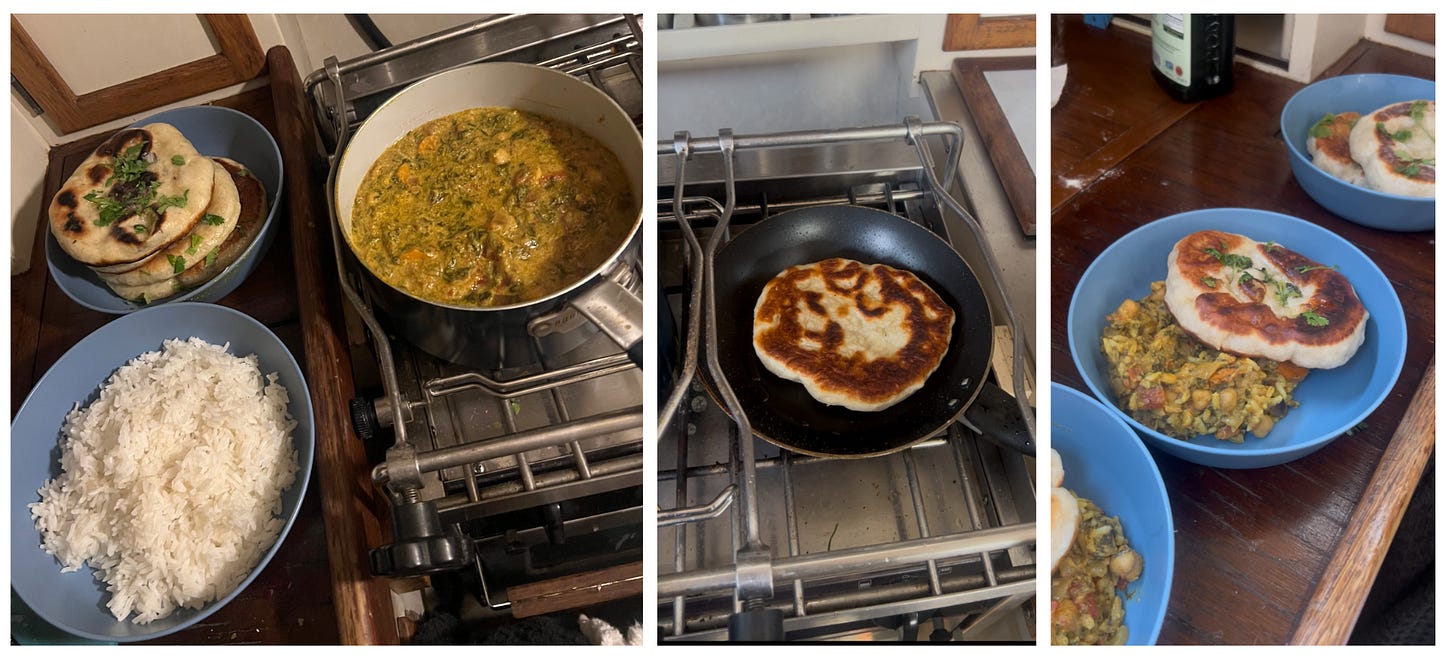
I’ve also perfected some hearty chillies, a stove-top shepherd’s pie, grilled chickpea & artichoke medley, and lots and lots of breakfast burritos.
Storing Leftovers for 24 Hours of Longer
One of the more perplexing challenges of being the Galley Dude, especially without a fridge, was how to prevent needing to cook a new meal for EVERY meal.
Even though we’re on a super-tight budget, we’ve needed to build in some occasional flexibility to treat ourselves off the boat. But mostly, we only buy food that I can’t make or keep aboard, like fancy pastries, cheeseburgers, French fries, and ice cream.
Still, for the meals that I do make (95% of all meals), I want one batch to last as long as possible.
Enter: The Care and Feeding of Sailing Crew by Lin & Larry Pardey.

The Pardeys are gods in the sailing world. We live on a 31-foot sloop, which is usually the smallest at any anchorage we visit, but the Pardeys lived on sailboats smaller than ours for over 40 years — without refrigeration, too!
Given that the Pardeys are masters of all things sailing & thriving aboard, I was extremely interested when I read on page 270 of their book a little method for stove-top preservation.
Lin specifically recounts a time when they worked on a Costa Rican fishing boat for a month and she had been hired as a cook. She tells the following story:
“When I started to package the leftover rice and beans to store them in the ice room, he stopped me: ‘Don’t waste your time. Leave everything on the stove top after everyone is finished eating for the day, cover each pot, bring it to a full boil for two minutes, then shut off the fire and don’t open the pot until you need it tomorrow. It will keep for seven days if you heat it every day.’ I followed his advice and found it to be correct. As long as there are no tomatoes in your soup, stew, or beans, they will keep for more than a week if brought to a full boil each day.”
I’ve had enormous success with their method:
Cover the pot
Boil for 2 minutes
Don’t disturb until the next day
I’ve tried it for all sorts of meals and have found that the food doesn’t spoil at all!
I love that it saves me on dishes, needing to cook every meal, and not getting sick from spoiled leftovers.
We have a small crew on board, and I only have one small-ish pot, so I’ve only needed this to work for 2 days. But I think I could make many leftovers last longer, if needed.
However, in meals that have rice, the food can get mushy. If you have any advice on how to prevent the mushiness, I’m all ears.
Surviving the Apocalypse — 2 Months & Beyond
Starting last week, we began heading more south than we’ve ever been on our sailboat. We also decided on our first international stop: The Bahamas! We’re hoping to be there in the next couple weeks.
We’ve heard from tons of sailors that The Bahamas are (1) amazing, but (2) very expensive to buy provisions.
So, I’ve stocked up for more than 2 months of provisions on our sailboat — about 4 times more than I’ve ever fit on board at one time. The most surprising thing was that everything fit. But the second-most surprising thing was that we still had room for more!
Here’s how & where we store them:

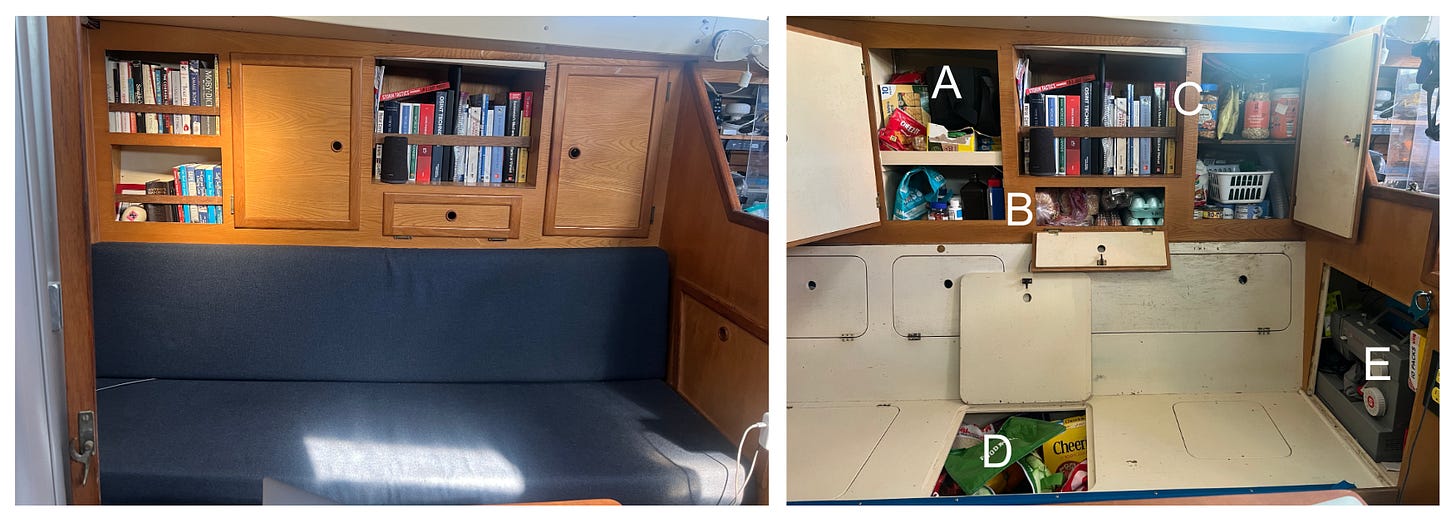
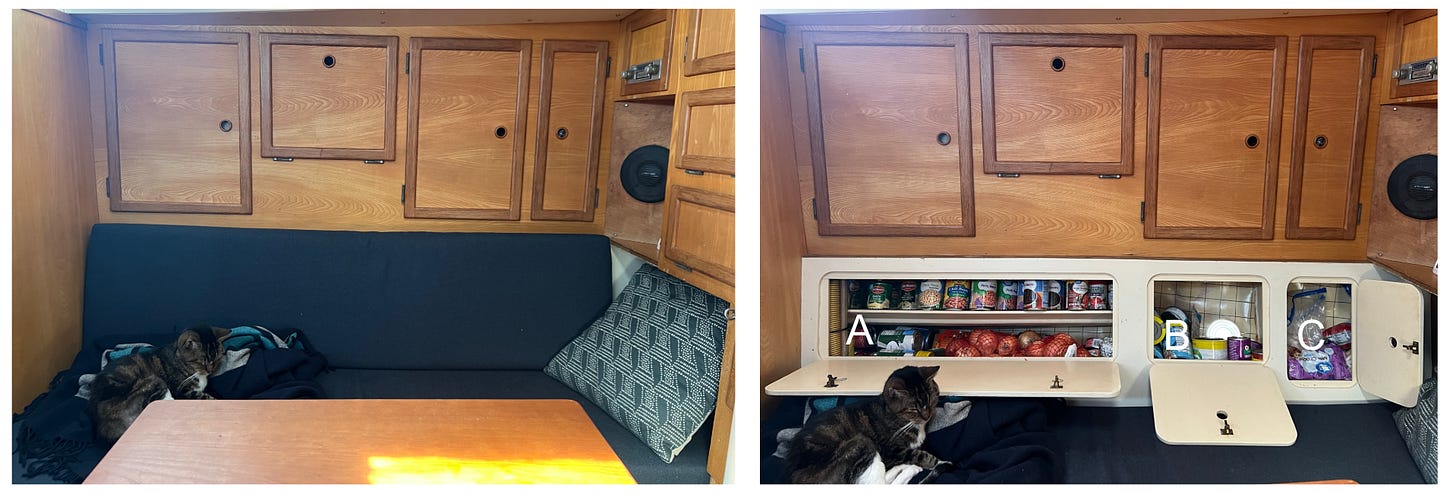
The Beauty of Our Chosen Constraints
People think living without an icebox or fridge is a sacrifice. But it’s not. Every constraint I’ve chosen has made me more capable, more creative, more free.
We can’t just grab takeout when I’m tired, so I’ve learned to cook better. We can’t waste food, so I’ve become more deliberate. We can’t rely on convenience, so I’ve built systems that work based on our tastes & personality quirks.
The more structure we create for ourselves, the more freedom we actually experience.
I also don’t want a fridge.
Even if $2k fell out of the sky tomorrow, that’s one of the last things I’d spend that money on. Nothing tastes better than cheeseburgers & ice cream after weeks of not having any. Plus, a fridge takes a ton of electricity, and not having one makes me feel more connected with sailors of the past.
When I tell other sailors that we don’t have refrigeration, even the ones on tight budgets like us think we’re pretty extreme. But I ask them, “What do you put in yours?” Without fail, they either mention something that doesn’t need to be refrigerated (like condiments), something we personally don’t eat a ton of anyway (most meat), or something we found we can live without (cold drinks).
Again, the key is to decide for yourself what works and master that.
All of this practice has set us up to get truly off the grid — not just geographically, but mentally. We’ve figured out how to knock this aspect of running our tiny city out of the water. We’re learning to master others as well. We’re thriving on our terms, not according to what advertisers or “experts” told us we needed.
This is what running your own tiny city looks like: continuing to improve the relationship between freedom and the structure you’ve chosen. Between what you need and what you can manifest with your own mind & hands. Between deprivation & abundance.
We all get to decide what that looks like for ourselves.
Until next time,
—Cory Vinny
Thank you from the bottom of my heart to all my paying subscribers. Your subscription helps my floating family sustain the adventure and continue sharing with you all for years to come.
$1 per month // $2 per month // $3 per month // $4 per month // $5 per month
If you’re feeling heroic, consider becoming a “Founding Member” (click the button above and choose the highest-tier option).
If you enjoyed my article today, you can also buy me a cup o’ Joe.




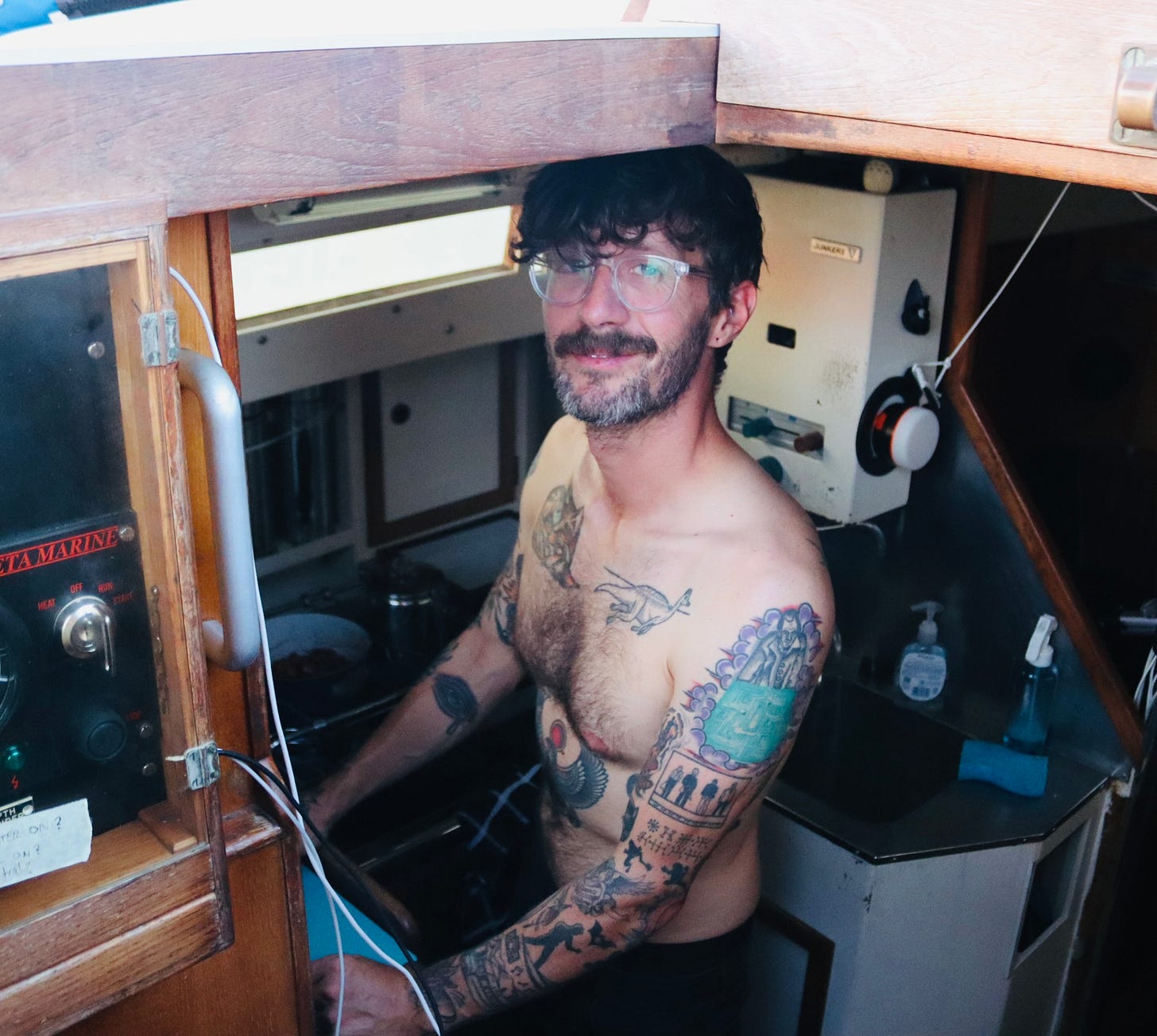

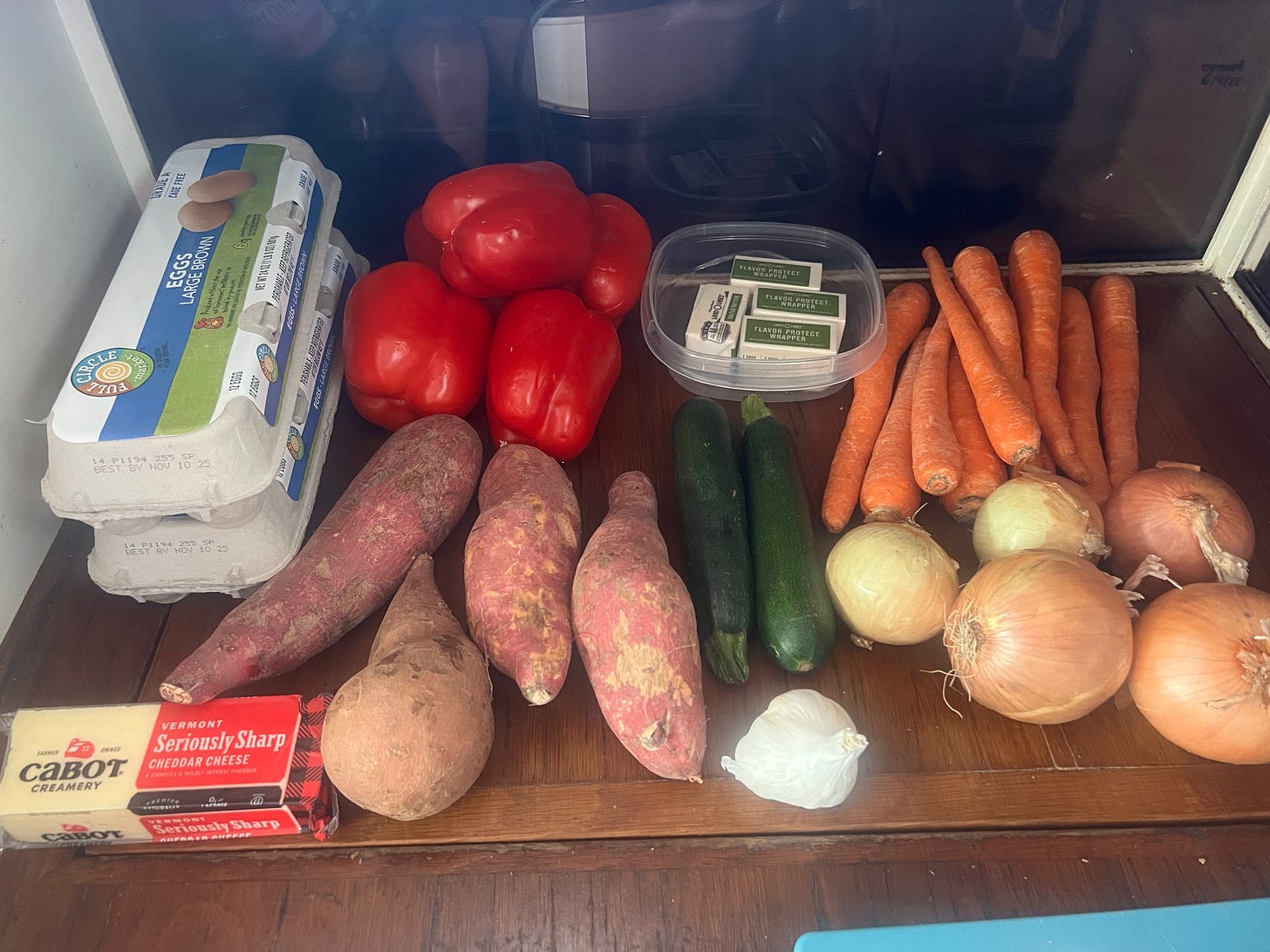
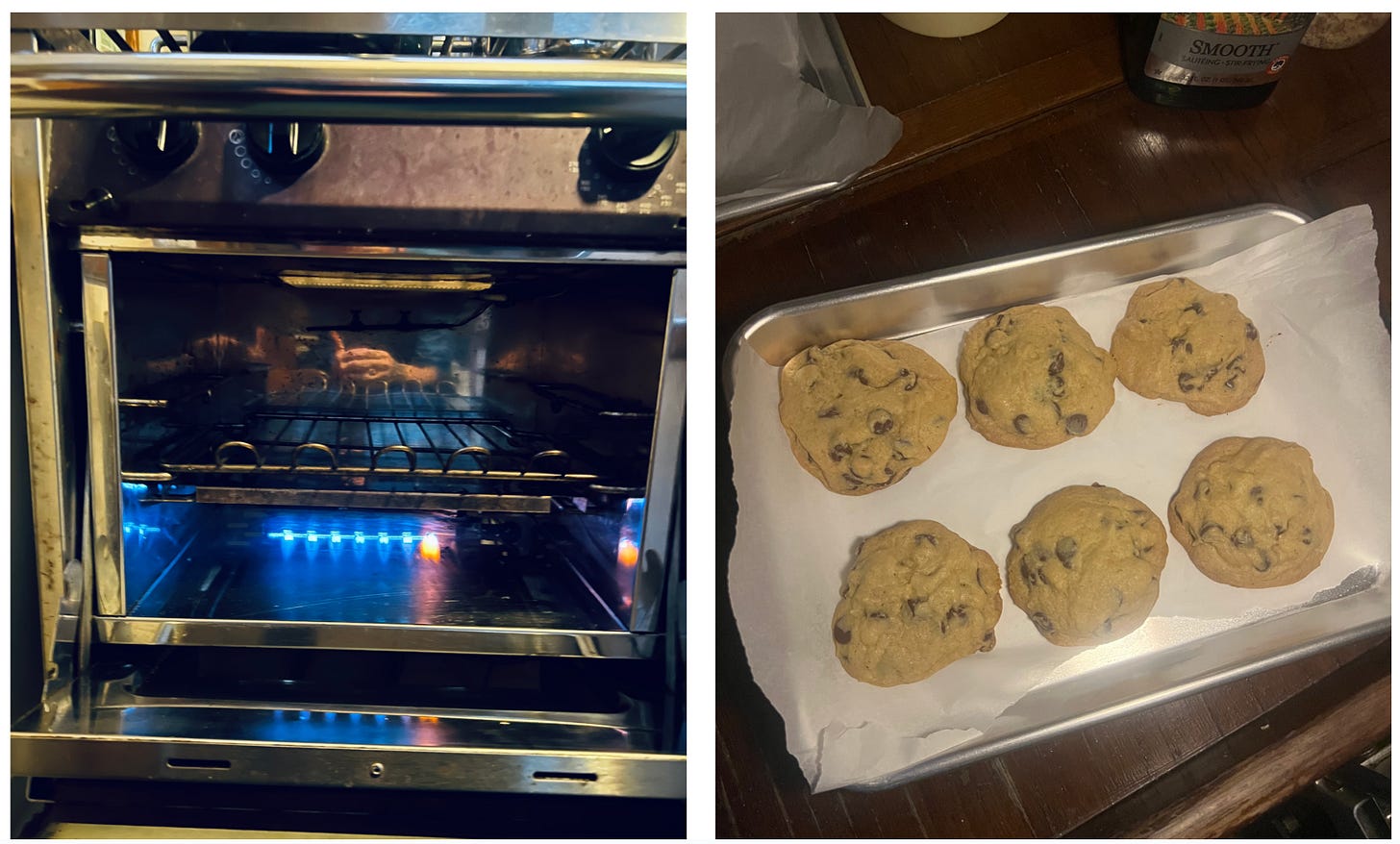
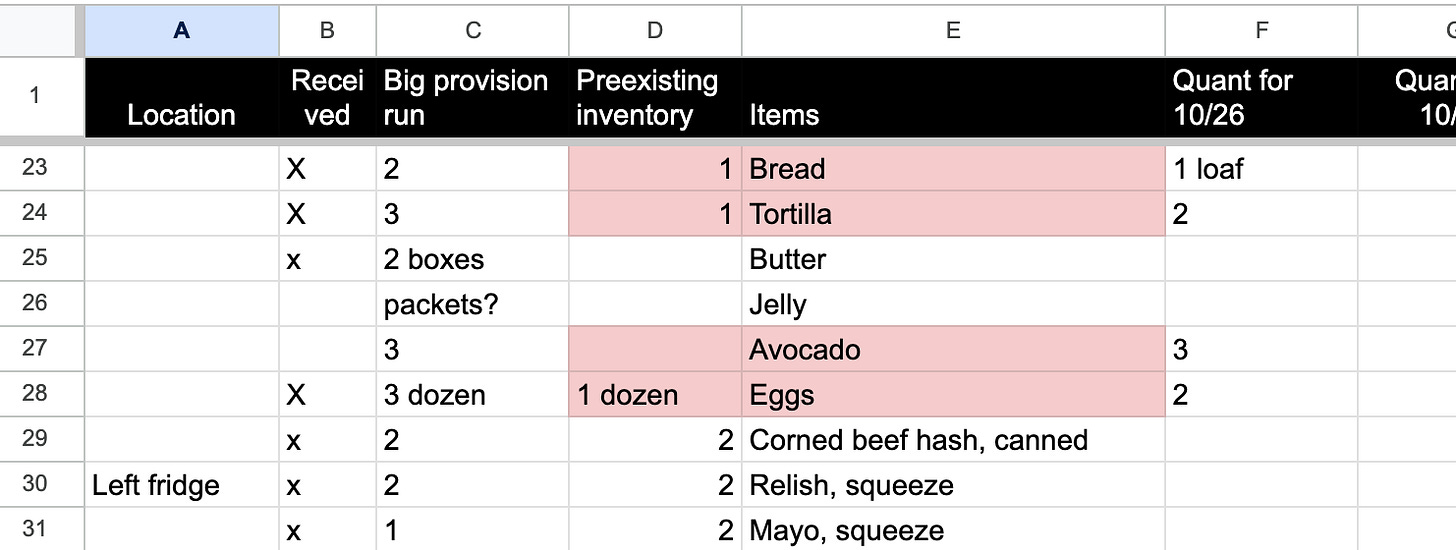
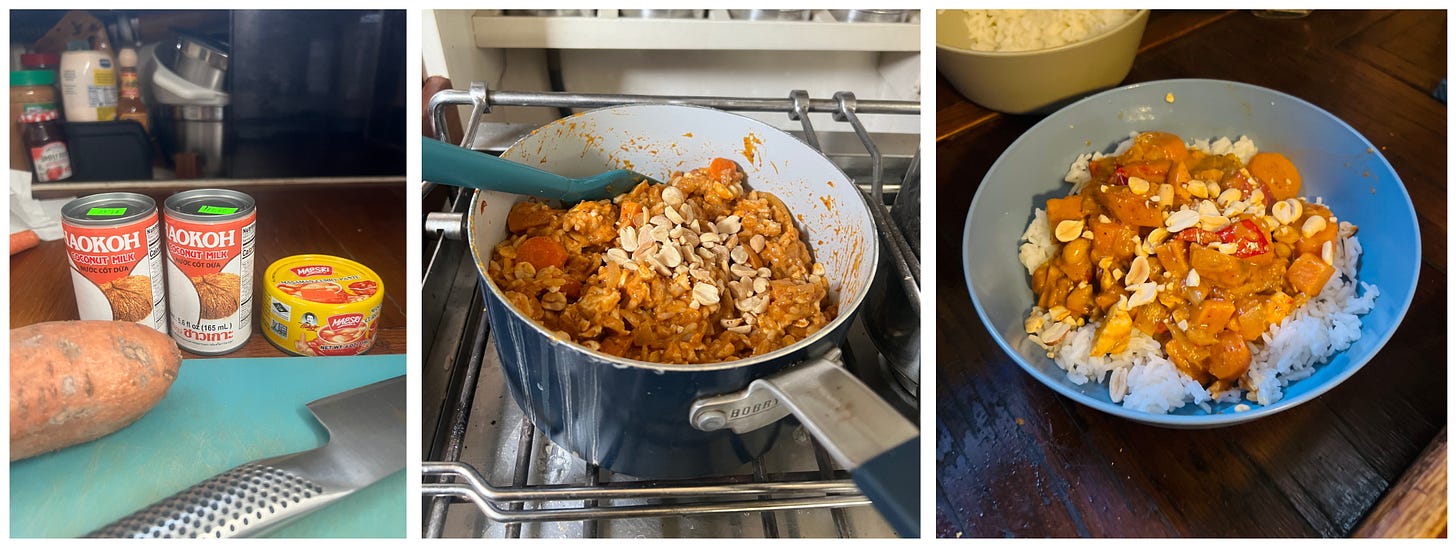
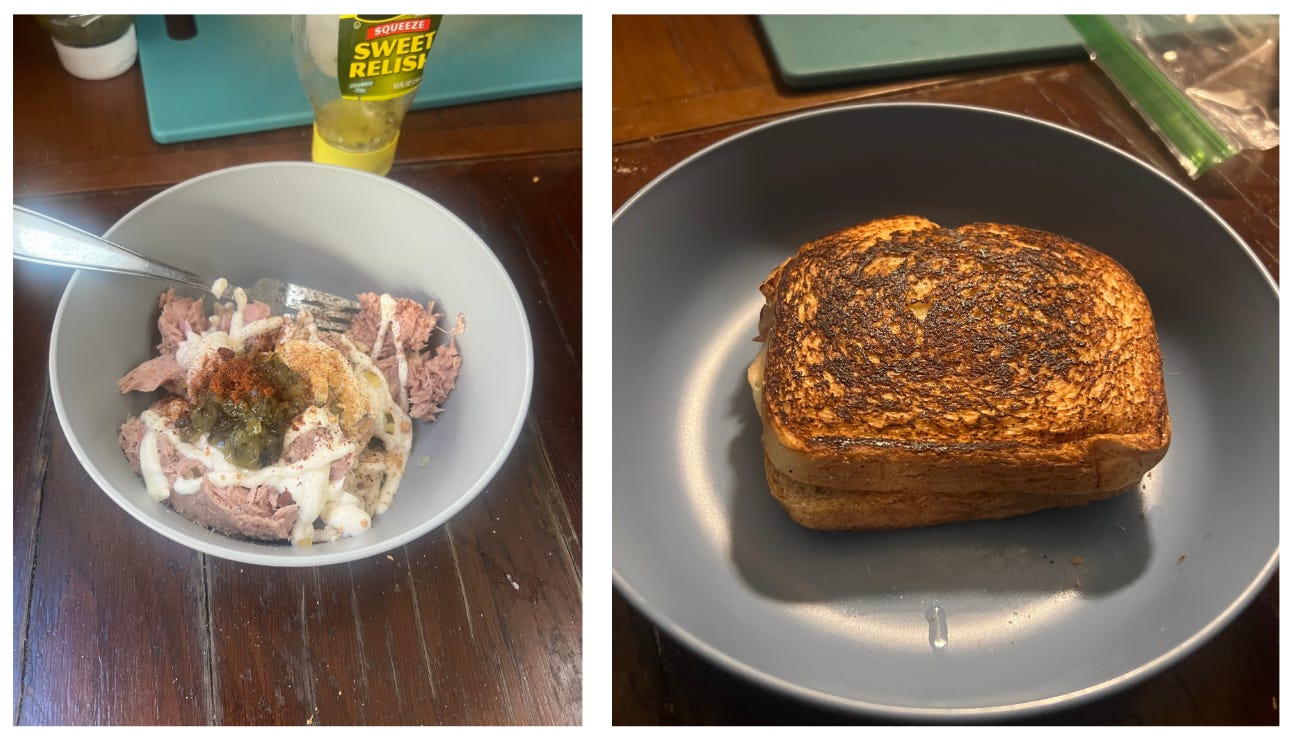
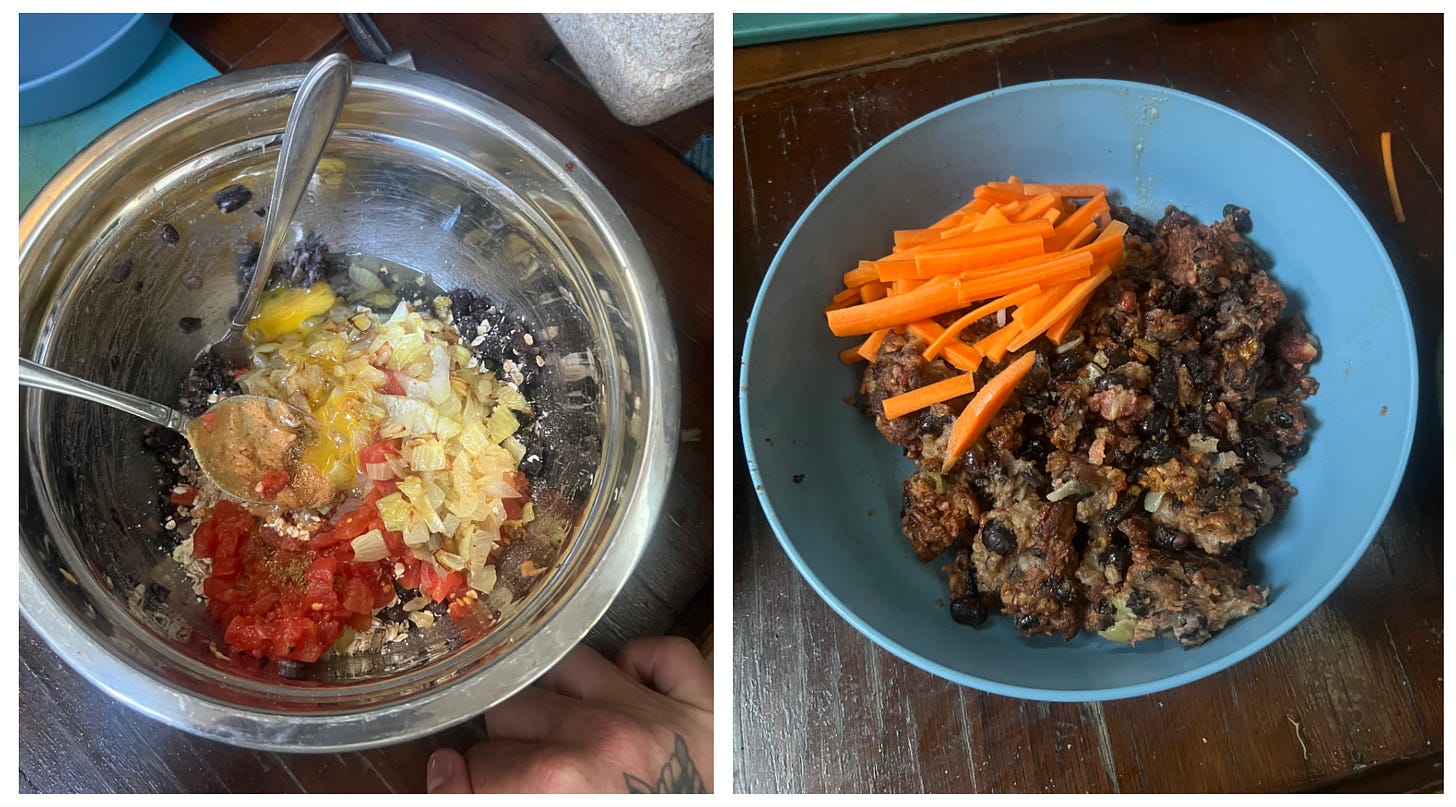


Just wonderful! I feel like I'm with you on the voyage. I love cooking, and camping, and I lived in Brazil without a refrigerator in the 80s, which totally reframed my ideas about what *has* to be refrigerated. You are an amazing chef!
As you rightly say fridges need electricity and unless you can power it using solar then it's your battery that's taking the hit.